LPAAT-θ Polyclonal Antibody
- Catalog No.:YT2584
- Applications:WB;IHC;IF;ELISA
- Reactivity:Human;Mouse;Rat
- Target:
- LPAAT-θ
- Fields:
- >>Glycerolipid metabolism;>>Glycerophospholipid metabolism;>>Metabolic pathways
- Gene Name:
- AGPAT9
- Protein Name:
- Glycerol-3-phosphate acyltransferase 3
- Human Gene Id:
- 84803
- Human Swiss Prot No:
- Q53EU6
- Mouse Gene Id:
- 231510
- Mouse Swiss Prot No:
- Q8C0N2
- Rat Gene Id:
- 305166
- Rat Swiss Prot No:
- Q4V8J4
- Immunogen:
- The antiserum was produced against synthesized peptide derived from human AGPAT9. AA range:381-430
- Specificity:
- LPAAT-θ Polyclonal Antibody detects endogenous levels of LPAAT-θ protein.
- Formulation:
- Liquid in PBS containing 50% glycerol, 0.5% BSA and 0.02% sodium azide.
- Source:
- Polyclonal, Rabbit,IgG
- Dilution:
- WB 1:500 - 1:2000. IHC 1:100 - 1:300. IF 1:200 - 1:1000. ELISA: 1:10000. Not yet tested in other applications.
- Purification:
- The antibody was affinity-purified from rabbit antiserum by affinity-chromatography using epitope-specific immunogen.
- Concentration:
- 1 mg/ml
- Storage Stability:
- -15°C to -25°C/1 year(Do not lower than -25°C)
- Other Name:
- AGPAT9;GPAT3;MAG1;HMFN0839;Glycerol-3-phosphate acyltransferase 3;GPAT-3;1-acylglycerol-3-phosphate O-acyltransferase 9;1-AGP acyltransferase 9;1-AGPAT 9;Acyl-CoA:glycerol-3-phosphate acyltransferase 3;hGPAT3;Lung cancer metastas
- Observed Band(KD):
- 48kD
- Background:
- This gene encodes a member of the lysophosphatidic acid acyltransferase protein family. The encoded protein is an enzyme which catalyzes the conversion of glycerol-3-phosphate to lysophosphatidic acid in the synthesis of triacylglycerol. Multiple alternatively spliced variants, encoding the same protein, have been identified. [provided by RefSeq, Jan 2012],
- Function:
- catalytic activity:Acyl-CoA + sn-glycerol 3-phosphate = CoA + 1-acyl-sn-glycerol 3-phosphate.,domain:The HXXXXD motif is essential for acyltransferase activity and may constitute the binding site for the phosphate moiety of the glycerol-3-phosphate.,enzyme regulation:Inhibited by N-ethylmaleimide (NEM).,function:Esterifies acyl-group from acyl-ACP to the sn-1 position of glycerol-3-phosphate, an essential step in glycerolipid biosynthesis. Overexpression activates the mTOR pathway.,pathway:Glycerolipid metabolism; triacylglycerol biosynthesis.,pathway:Phospholipid metabolism; CDP-diacylglycerol biosynthesis; CDP-diacylglycerol from sn-glycerol 3-phosphate: step 1/3.,similarity:Belongs to the 1-acyl-sn-glycerol-3-phosphate acyltransferase family.,tissue specificity:Widely expressed. Expressed in liver, kidney, testis, brain, heart, skeletal muscle, thyroid, prostate, thymus and placenta.
- Subcellular Location:
- Endoplasmic reticulum membrane ; Multi-pass membrane protein .
- Expression:
- Widely expressed. Expressed in liver, kidney, testis, brain, heart, skeletal muscle, thyroid, prostate, thymus and placenta. Also expressed lung and adipose tissue.
- June 19-2018
- WESTERN IMMUNOBLOTTING PROTOCOL
- June 19-2018
- IMMUNOHISTOCHEMISTRY-PARAFFIN PROTOCOL
- June 19-2018
- IMMUNOFLUORESCENCE PROTOCOL
- September 08-2020
- FLOW-CYTOMEYRT-PROTOCOL
- May 20-2022
- Cell-Based ELISA│解您多样本WB检测之困扰
- July 13-2018
- CELL-BASED-ELISA-PROTOCOL-FOR-ACETYL-PROTEIN
- July 13-2018
- CELL-BASED-ELISA-PROTOCOL-FOR-PHOSPHO-PROTEIN
- July 13-2018
- Antibody-FAQs
- Products Images
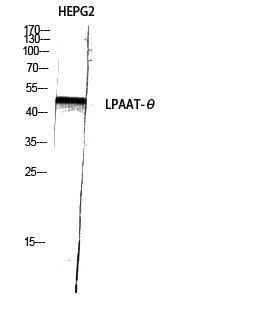
- Western Blot analysis of HEPG2 using LPAAT-θ Polyclonal Antibody diluted at 1:1000
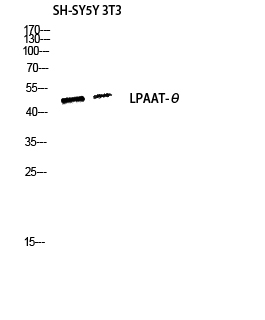
- Western blot analysis of SH-SY5Y 3T3 lysis using LPAAT-θ antibody. Antibody was diluted at 1:1000
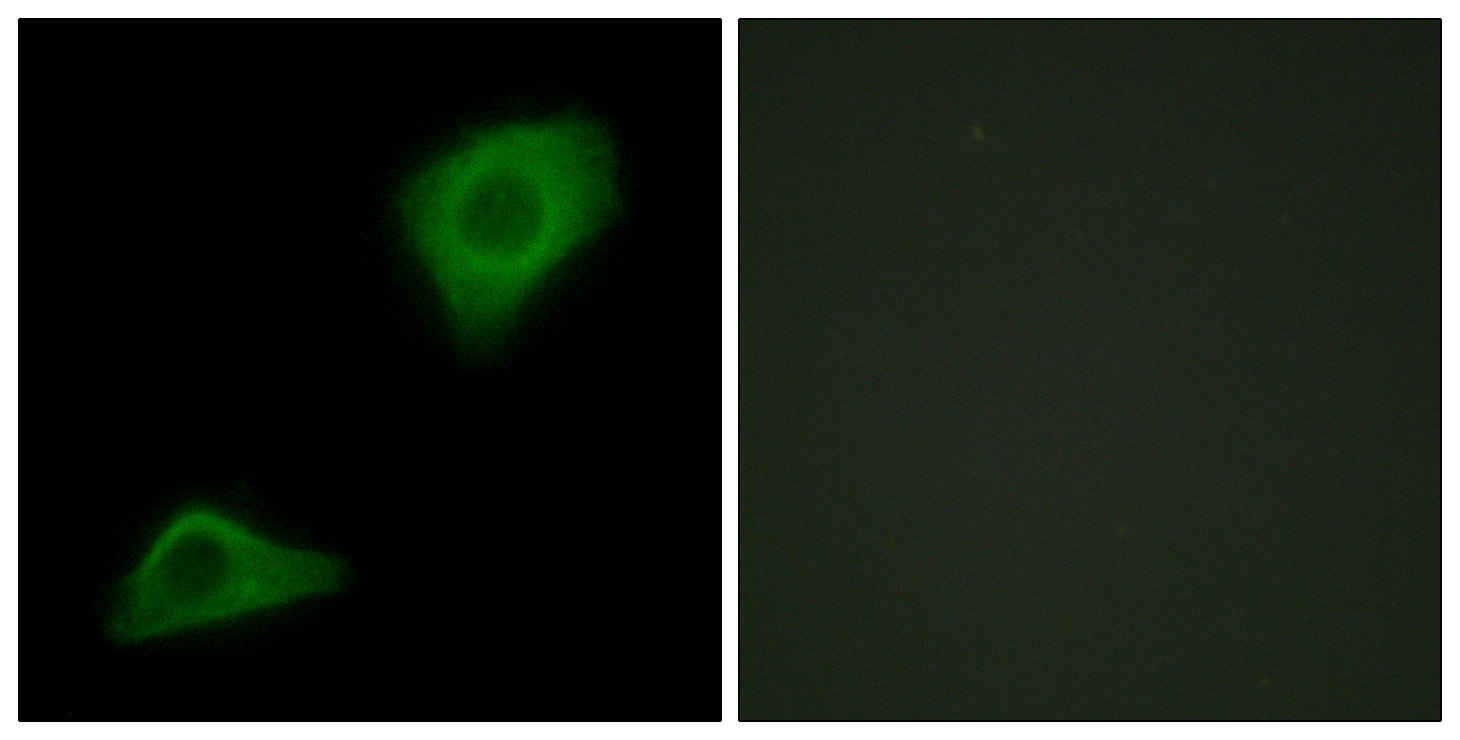
- Immunofluorescence analysis of HepG2 cells, using PLCH Antibody. The picture on the right is blocked with the synthesized peptide.
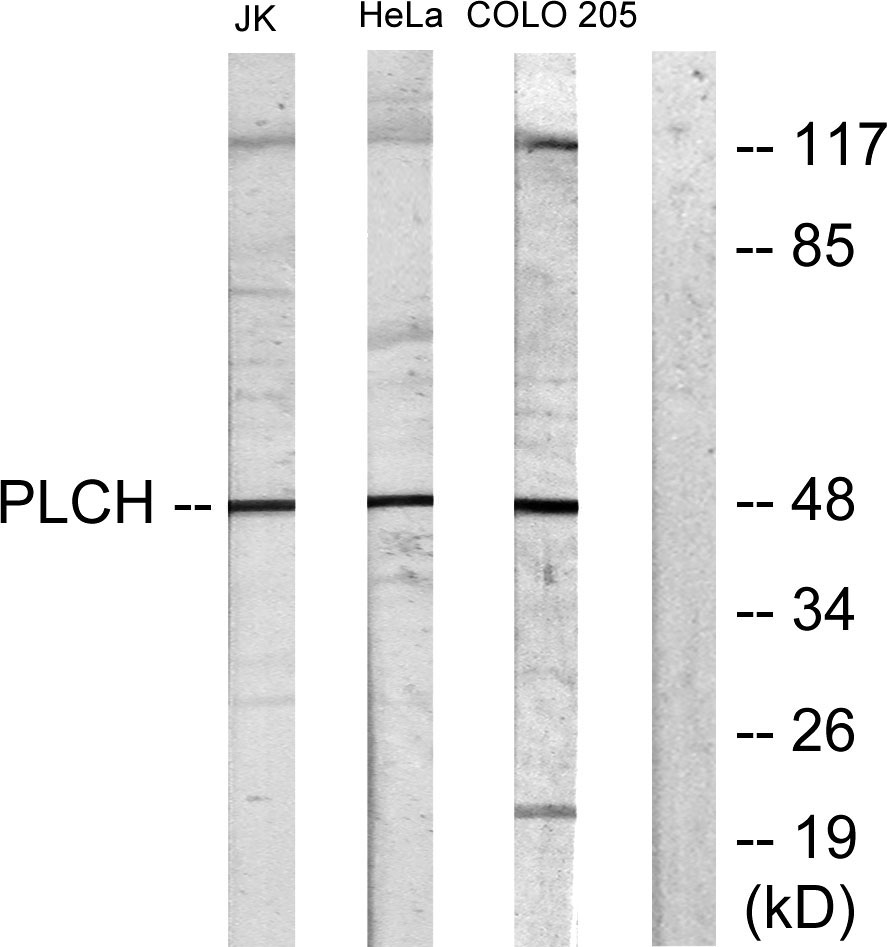
- Western blot analysis of lysates from Jurkat cells, COLO205 cells, HeLa cells, and HUVEC cells, using PLCH Antibody. The lane on the right is blocked with the synthesized peptide.
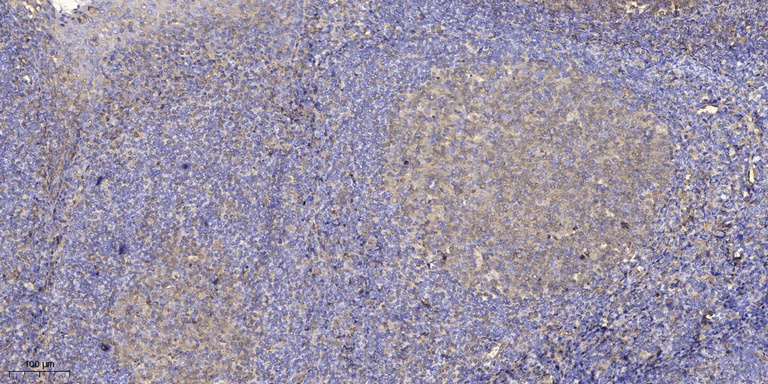
- Immunohistochemical analysis of paraffin-embedded human tonsil. 1, Antibody was diluted at 1:200(4° overnight). 2, Tris-EDTA,pH9.0 was used for antigen retrieval. 3,Secondary antibody was diluted at 1:200(room temperature, 30min).



